Learning Objectives
After this course, participants will be able to:
- Describe changes to the Widex fitting rationale.
- List the 2 new sound classes available in Widex EVOKE.
- Explain the benefits of user-focused Machine Learning in hearing aids.
Introduction and Overview
With Widex EVOKE we are able to offer solutions for clinicians and patients that have never been seen before in the hearing aid market. Today, we discuss how this product is intelligent through improved automation and machine learning. We will also take a look at the EVOKE style, and discuss the different app options. Widex developed this product using a thoughtful process, keeping in mind how people live day-to-day. With hearing aids, we inherently make assumptions about what patients want to hear. We assume they want to hear speech in the environment. As an industry, hearing aid manufacturers are quick at making these assumptions, and as a result, hearing aids have historically become more automatic. However, we cannot always understand the intention of what people want to hear in a specific environment.
With this new product, we wanted to take into account what hearing is like in real life. Imagine, for a moment, that you are on a beach in Hawaii. You can feel the sand in your toes, the sun on your skin and the gentle breeze off the ocean. You can hear the ocean waves, the ice clinking in your cold beverage. and the ukulele player. In that environment, what do you want to hear? For me, I love the ocean waves. My intention in that environment would be that I can hear the waves. Some of you might be musicians and may prefer to hear the ukulele player. Others might rather hear the conversation going on around them. Each of our intentions could be different in that environment. Widex wanted to take all of that into account when building our new hearing aid, Widex EVOKE.
Widex EVOKE: Intelligent Today, Smarter Tomorrow
The tagline for Widex EVOKE is "Intelligent Today, Smarter Tomorrow." We are going to break that down and talk about the components in this hearing aid that make it smart, automatic and functioning for your patients today. This hearing aid has the ability to evolve as your patient wears it. That's going to provide unlimited possibilities for the future.
Today, we will discuss the following upgrades and new features:
- The new chipset
- Four new sound profiles
- Two enhanced sound classes
- Three new specialized programs
- Real-time machine learning (the industry's first)
EVOKE Dual Core Chipset
What makes a good chip? It has to be powerful and able to process quickly, in order to give your patients a more accurate analysis and reaction to the real-life environment. Unfortunately, the tradeoff of having a more powerful chip is that the battery drain tends to be higher.
Widex is excited to announce our dual-core chipset. Widex has always had the bottom chip, known as the closed accelerated core. That's a closed chip. In other words, it is dipped in silicone, in order to lower the drain on the battery. However, if a chip is closed, it makes it harder to evolve the chip. That's why we have now added the top chip: the open flexible core. That chip means that we can make changes to the chip throughout the life of the hearing aid. Because we are using two chipsets which interact together, we can provide 30% more processing power, which translates to a more accurate analysis and reaction to real-life environment.
Distributed computing. Our smartphones have a large amount of processing power. A hearing aid can not have that much processing power because we don't have the space for it. The open and closed chipset has allowed us to harness the computing power in the phone, and use that to implement decision-making processes in the hearing aid. Additionally, we can take that information and upload it to the Widex cloud. When patients make changes in the app, those changes can be uploaded to our cloud and we can keep track of them. If we see a trend, we can push a firmware update back to the hearing aid through the phone. We are able to use that computing power in the phone to communicate with the cloud and talk to the flexible core. This gives us not only more processing power, but also more information than has ever been available.
Smarter Automation
The primary goal of the hearing aid is to deliver automation and the most accurate sound setting decisions possible. With the new chipset, Widex is able to make the hearing aids more automatic, allowing us to:
- Update our variable speed compressor (VSC) in each sound class
- Double the fluid sound analyzer training
- Offer 20% more sound classes
Which is better: slow-acting compression or fast-acting compression? The fact is, they are both beneficial. In general, Widex has been focused on slow-acting compression, which is better for preserving temporal and spectral cues, resulting in a more natural sound. On the other hand, fast-acting compression is able to pick up the nuances of sound in dynamic environments. Widex has been able to use both types of compression before, but now, we've attached them to our fluid sound controller, allowing us to use both types of compression strategies simultaneously. We are able to use what's going on in the environment to not switch just back and forth between slow and fast, but to use both forms of compression at the same time. Currently, Widex is the only manufacturer that has been able to achieve this, because of the updates to our chipset.
In order to measure if this strategy offered significant improvement for speech intelligibility, we conducted a study to test people's signal-to-noise ratio level (SRT). We wanted to find out how noisy it has to be for a patient to score 85% on an SRT test (Figure 1). We found that with slow-acting compression, patients needed to have a high signal-to-noise ratio. Fast was a little bit better, but with our variable speed compression using both strategies at the same time, the patients were able to have better word recognition in noisier environments. Patients are able to hear better in noise because of our variable speed compression.
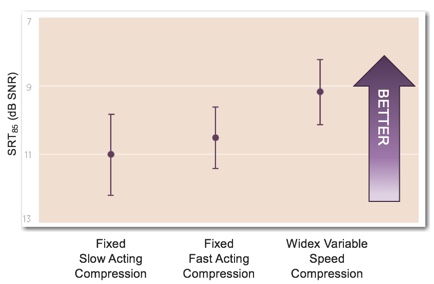
Figure 1. Speech intelligibility in noise.
In the past, we used to follow the guideline that if a patient scored lower on a cognitive test, we should lean toward using slow-acting compression. With this product, that notion is obsolete. You no longer need to balance between fast acting or slow acting. This product is going to be a good fit for all patients, regardless of their cognition, because they're going to be able to hear in dynamic environments and the hearing aid will preserve those temporal cues. You and your patients get the benefit of both slow and fast-acting in one product. It doesn't have to be part of your selection process.
Fluid Sound Technology: Sound Classes
In our product, we have a universal program which is able to detect the environment. We call those environments sound classes. We are able to accurately identify what environment your patient is in. Then behind the scenes, we are able to make automatic adjustments to those sound classes through the features, through the gain. In our previous high-end product (in the 440), we had nine sound classes. In our new product, we are adding three more sound classes.
In our previous product, we had one music sound class, so your patient would be able to detect music. We had two quiet sound classes: one with and without speech. We had a transport sound class (i.e., it could detect if your patient was in a car) and we also had an urban sound class, with and without speech. I compare the urban sound class to situations such as the grocery store, an office environment, or walking down the street. Lastly, we had a party sound class, with and without speech. Party is more of a restaurant environment. Those all worked well, but because of our new processing power, we wanted to add more.
Social sound class. With EVOKE, we've added the social sound class, which is a bridge between party and quiet. Previously, if your patient was sitting around the dinner table, the hearing aid would detect party because there are several people talking. However, in a dinner party environment, you're going to have a good signal-to-noise ratio, because there's not a lot going on around you besides the talking. The social sound class reduces some of the distant sounds (e.g., someone clamoring in the kitchen, the refrigerator running, etc.). It's going to push those unwanted sounds away and it's going to pull in more of the dinner party guests' voices. A lot of people spend their time in smaller social gatherings, for example, at the dinner table or playing card games. In these types of environments, this social sound class will give those patients good and accurate sound quality.
Music sound classes. Previously, we had one music sound class. With EVOKE, we have introduced two new music sound classes to accommodate different styles of music: classical and contemporary. In general, with contemporary (i.e., rock) music, there is not a huge contrast between soft sounds and loud sounds. With classical music, there are a lot of low soft sounds, then a lot of louder sounds. Also, the frequency bandwidth is usually a little bit wider with classical music. Now, we are able to distinguish between the qualities of contemporary and classical.
Figure 2 provides an overview of our entire Sound Class system, so you can see the sound classes available at each level of technology. If you had previously fit patients with the Unique or the Beyond, you can see we've added more sound classes in our lower level technology. In the 440, we've added the classical music versus contemporary and the social. In the 330, we've added transport and urban classes. We've even added transport into the 220-level product.

Figure 2. Sound classes.
What you should expect to see is superior automation for dynamic lives. As your patients go about their days, the hearing aids are going to adjust automatically for them. Remember: For each of those sound classes in the software, as the fitter, you are empowered to help your patient in each of those environments. If your patients have complaints in specific environments, you're able to make adjustments to those.
The Power of Machine Learning
Next, we are going define and discuss machine learning. First, I'm going to do a brief review of some of the terminology related to machine hearing, and then we'll get into how it applies to hearing aids.
- Automation. In general, automation is a system trained to complete a task. It's not evolving; it's fixed. As an example, think about a manufacturing plant, such as the factory in Denmark where they make wax traps for a lot of hearing aid manufacturers, including Widex. In the factory, there's one machine dedicated to punching out the wax traps. That's an example of an automated machine.
- Artificial intelligence. AI is the theory and development of computer systems to be able to perform cognitive tasks that usually require human intelligence. If you think about an automatic car, that automatic car has been trained to make decisions. Artificial intelligence has the ability to automatically learn and improve from experience without being programmed to do so.
- Machine learning. Machine learning is a sub-category of artificial intelligence. You probably have been exposed to machine learning in your everyday life and you didn't even know it. I'm a big fan of Netflix and I love to watch 30-minute sitcoms at the end of the day. Sometimes, I'll complete an entire television series, and when it is over, I wish I had another TV show to watch. Netflix is magically there to suggest recommendations for you. They use that machine learning process to help select recommendations for you based on what you've already watched.
Widex is taking the power of machine learning and applying it to hearing aids. This is the industry's first real-time machine learning. As I stated earlier, it is cloud-based network learning. Coming up, we are going to talk more about how this machine learning applies to hearing aids.
Sometimes, people hear the term "machine learning" and become worried about whether they will be replaced by a machine. As hearing healthcare professionals, our world is evolving. One of our Widex trainers, James Martin, has been quoted as saying, "Hearing care professionals will not be replaced by technology, but those who do not use and understand technology will be outperformed by those who do." We have to make sure that we are using technology to benefit our patients. I want you to think about that as we go through the next section.
SoundSense Learn
SoundSense Learn is our feature that uses the real-time machine learning. How does listening intention generally work with your patients? Let's look at a typical scenario. One of your patients is out in an environment. They get frustrated, they feel like they can not hear well. They might make an adjustment to their volume control, but maybe they don't. Hopefully, your good patients will say, "I wasn't hearing well. I'd love to go back to my provider and tell them what's going on and make changes." Then, they come in and they describe their environment to you. You take what they say, interpret it into programming speak and make the adjustment. Then, perhaps they go back out again, and hopefully, the adjustment you've made has helped. There is a lot of interpretation going on in that interaction.
This is the way SoundSense Learn works. Your patient is in an environment. They're able to make changes in their app to their hearing aid via SoundSense Learn. Those hearing aid settings are changed in real-time, and your patient is able to immediately tell if it works or not. How many times have you been in a situation where your patients say, "I made a few changes to my hearing aids, but I'm not sure if it made a difference or not"? With SoundSense Learn, we are trying to make sure to guide your user to perfect sound.
In the app, your patient will have two setting samples to listen to: A and B (Figure 3). The differences between A and B are the differences in that equalizer in the app. The hearing aid will start at two different setting points. It will start with an A setting and a B setting. Your patient will listen to A and then to B, and determine which one they like best. In the app, they'll move the slider over to indicate whether they like it moderately better, a lot better, or a little bit better. As they do that, then they'll hit "Next", and listen to another A and B sample. They'll go through a few A and B samples until they indicate, "Yes, this is my intention in this environment, my needs are being met right now." If they want, they can save that program as a favorite. Once they open and close their battery doors or change it to another program, those settings will be erased. Whatever changes they're making in this part of the app in the SoundSense Learn, they're not being saved or overriding your hearing aids; it's just allowing your patients to be happier in the moment.

Figure 3. How Sound Sense Learn works.
What part of this uses machine learning? Just how sophisticated is this? Modern hearing aids have a multitude of parameters that all contribute to the end user experience. A common approach for comparing settings and collecting end-user input is by using some form of paired comparisons (A/B testing). However, the number of comparisons needed to optimize hearing aid parameters rapidly increases as we introduce more parameters (Figure 4). The number of paired comparisons needed to sample this space fully is over two million. Clearly, relying on a traditional approach for ending up with an ideal HA setting for a given user's auditory intention will take too long. Because we can use the distributed computing power in the phone to access machine learning, the user will get personalization within moments. Your patients are going to be able to go through two million different settings within seconds to achieve their optimal situation.

Figure 4. Paired comparisons needed to optimize hearing aid parameters.
To review the SoundSense Learn process:
- Patient has difficulty hearing.
- Patient uses the real-time machine learning AB comparison for instant benefit.
- Patient changes are uploaded into the Widex Cloud.
- Patient receives long-term learning benefits through firmware updates.
- Patient gets instant gratification to hear in-the-moment and long-term learning benefits
These are real-life environments that your patients are in. If your patient came in and said, "I'm having a hard time hearing at the swimming pool", that would be a challenging adjustment to make in the office, especially, when you're not in that environment with them.
We conducted some internal research to determine the proof of benefit for patients using Sound Sense Learning (Figure 5). We surveyed patients and asked them to rate their perceived improvement in comfort and quality in three conditions: using SoundSense Learn, using the Universal setting with the Classifier disabled, and the Universal setting with the Classifier ON.
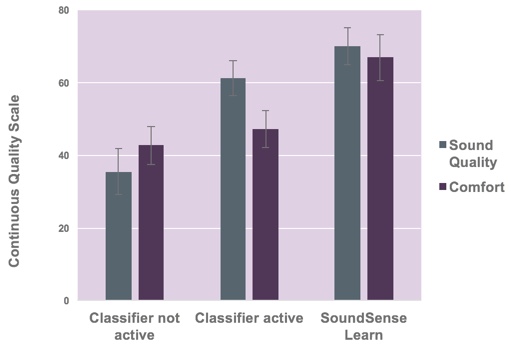
Figure 5. Subjective improvement in both comfort and quality.
The results indicated that patients reported better sound quality and higher comfort levels with SoundSense Learn. In their real-life environments, when patients were able to make adjustments based on what they wanted to hear, their perceived improvement skyrocketed. SoundSense Learn, the industry's first real-time machine learning and cloud-based network learning, provides significant benefit to your patients.
SoundSense Adapt
Another feature that's part of our machine learning umbrella is SoundSense Adapt. This technology isn't new to the industry, but Widex's SoundSense Adapt is the industry's best. It's a gradual learning over time with our preference control, referred to as volume control by most manufacturers. Widex calls it preference control, because we don't simply make everything louder or softer. Widex makes things either more audible or more comfortable. We do that by changing the features and changing the gain based on the environment. With Widex, there is more going on behind the scenes.
Patients can access preference control through their app, through the buttons on their hearing aids, or through their accessories. Anytime there is a button with a plus or a minus, that's going to be a preference control change. If your patient maintains the change that they made for at least 30 seconds, gradually over time the hearing aid is going to change. We cap it at a maximum of 50% of a change from the original settings (about two or three click maximum). I used this with previous products when I was in the clinic, and I found that patients were turning it way down or way up, and the automatic learning was following their lead too much or making too many changes to their settings. Widex has implemented the cap, so that over time as the hearing aids learns, the gradual changes in the hearing aids will make a big difference for the patient.
Another aspect that makes SoundSense Adapt different and more useful is that it is sound class specific. The change is only logged when a patient presses a button in a specific environment. If your patient turns it up two clicks when they wake up in the morning and they're in a quiet environment, the hearing aid is only going to learn the change in the quiet environment. Like I said, the change is learned in the environment where they make it. That way over time, the hearing aid isn't going to be making changes to transport or social -- it's only making changes in the environment where the patient makes the change. If you don't like the changes that were made, you can clear out the options, or even decide to turn it off if you choose. Try it with a few of your patients. I think what you can expect to see is reduction in fine tuning when your patients come back. Because it is such a conservative and specific system, you're going to be seeing those benefits of fewer follow-ups, fewer patient visits.
EVOKE Fitting Enhancements
Today, I'm going to give you a brief overview of the fitting enhancements that we've made, mostly involving the software. As before, you're going to follow the same fitting flow. We expect to do the gain optimization or feedback test, the sensogram (if you choose to), and then you'll have the fine-tuning changes with the sound classes, the SoundSense Adapt, and then some new programs. Obviously, you'll want to end with some counseling and guidance.
Experienced User vs. Inexperienced User
One of the enhancements we've made to the fitting flow is that now we have four sound rationales or profiles. Previously, Widex has had an open fit rationale and a vented rationale (what we used to call Flex Fit). Those two rationales have been updated, based on some studies that we conducted. we are also introducing a new user versus experienced user rationale. Now you have four options:
- New user open fit
- New user vented fit
- Experienced open fit
- Experienced vented fit
The open and vented fit will be automatically selected for you when you go into the software and you choose either an open tip or a vented tip.The reason that we are introducing the option to select user experience level is because you never get a second chance to make a first impression. Have you ever turned on the hearing aids and your patient made that scrunched up, wincing face? We don't want your patients to have that experience. Once you connect the hearing aids, and you choose the receivers and the tips, now you will be able to select the experience level of the client. An experienced client would be one who has had at least one year of active hearing aid use. If they do not have that level of use, they would be considered inexperienced. For example, if a patient has had a hearing aid for seven years, but they've only worn it for seven hours, that would be considered an inexperienced user. The experienced rationale is about 2 dB louder than the inexperienced level. we are not talking about a huge difference, but the 2 dB can mean the difference between a wincing grimace and a smiling face when you turn on the hearing aids.
Faster Gain Optimization Test
When fitting hearing aids, one of the most frustrating things you can say to a patient is, "we are going to run this calibration test, and while it is running, we can not talk." Then, as soon as you hit "Start", the patient says, "I hear it". We've made the gain optimization test shorter. In comparison, with Dream, it lasted about 22 seconds. With Unique and Beyond, it was about 25 seconds. With EVOKE, we've shortened the test to under 15 seconds. That's less time for your patients to talk or move or jolt in the middle, making the test more accurate. In addition, the dual-core system now allows us to save part of the feedback test, so when you change tips, we can run the test in under 10 seconds (usually in six or seven seconds). This is going to improve patient comfort, as well as save time and decrease frustration.
New Programs: Comfort, Impact and Social
We've also added three new manual programs for you to individualize the fit further. These are not part of the automatic universal system; these are additional programs that you could add for your patients to access manually. These new options allow you to customize the fit more, based on patient need.
Comfort. By popular demand, we have brought back the Comfort program. Imagine you've been hanging out with your family for three days, and you don't want to talk or listen to anyone anymore. This is the time for the Comfort program. This is when you're not trying to hear speech. For those patients that go into environments where they don't want to listen to people and they just want to be as comfortable as possible, this is going to provide them with 12 to 18 dB of noise reduction.
Impact. We've also introduced the Impact program. We were trying to design a program to give you the best access to speech in challenging situations. It has aggressive noise reduction, fast compression, and a sharper overall sound quality. The appeal of the Impact program depends on the user's personal preference toward sharp sounds. Some customers have a very visceral reaction to this program. Patients either love this program or they don't, because it has a sharp quality. I would use this program if you have a patient who doesn't seem very satisfied, and you consider switching them to a different manufacturer. The Impact program has a different sound quality that's going to make the hearing aid sound a lot sharper. For some patients, that's going to make a big difference and allow you as the provider to stay within the Widex family, but still give them different options. Additionally, sometimes people like this program for when they're in noisy environments. It could be an optional manual program for them too. One of the sales reps that works for Widex has attention deficit disorder. He likes the Impact program, because it provides that sharper quality, making it easier for him to pay attention. I thought that was an interesting observation. When you order your first set of EVOKEs, I recommend that you listen to this program. Once you hear it, you will be able to gain an understanding of the sharper sound quality.
Social. Also, we talked about the Social sound class, but we've also added the Social program. The Social program is optimized for small group situations with multiple speakers with a focus on speech. This is a manual program that your patients could access. Why would you want to add a manual program if the hearing aid is so automatic? If you want to override what the hearing aid is doing automatically, that's when you would want to add this new Social program. If you want your patient access to that small group sound in an environment where the hearing aid wouldn't automatically detect that (because maybe they're in a noisy restaurant or they're in a quiet place), this allows you to manually override what the hearing aid would automatically do.
Widex Signature Features
With all of that said, Widex is keeping and improving upon the signature features that we've always had in our products (Figure 6). This includes features such as our True Input technology with our A-to-D converter, as well as Speech Enhancer (our noise reduction strategy that's been proven to be effective in noise), SmartWind Manager, and our tinnitus treatment programs. All of these great features are still being maintained in our hearing aids.

Figure 6. Widex signature features.
EVOKE Styles and Technology Levels
Widex EVOKE is a full product launch. Figure 7 shows the full array of styles and technology levels that will be available.

Figure 7. EVOKE styles, technology levels and availability dates.
RIC Options
We have three 312 RIC options in this product. We have the Fusion 2 style (with the 2.4). If you have ordered Beyond Fusion 2s, those look similar on the outside (with that racing stripe), and have the push button with the W. It has the 2.4 or made for iPhone features. The Fusion 2 model is also compatible with the Z Power. If you're taking this course before June 2018, you would have to order a retro kit and the Fusion 2 and put it together in your office. After June 2018, you can order an EVOKE Fusion 2Z (a 312 RIC with 2.4 and Z Power), and we will put them together for you. Lastly, we do have our EVOKE Fusion style. That's the style that's going to look similar to the Fusion that was in the Unique or the Dream. Essentially, that means we have two 312 RIC styles. One has made for iPhone or 2.4 and one does not. You would order an EVOKE Fusion if you want to order a CROS, as the EVOKE Fusion is CROS compatible. Lastly, the 110 style only comes in the EVOKE Fusion. EVOKE Fusion for CROS and for 110; EVOKE Fusion 2 would be for everyone else. Coming in June 2018, we are also going to have our EVOKE Passion available (size 10 RIC). I'll talk more about this later, but it is a very small RIC, which gives it that cosmetic appeal.
BTE Options
We also have three BTEs. The Fashion is the tall skinny one, the Fashion Mini is the shorter one, both of which are 312s. The Fashion Power is a power size 13 BTE. This size 13 battery will last two to three weeks. If you have a patient that needs a power hearing aid, or even just needs a BTE, I would recommend this Fashion Power because of the battery life in it.
Custom
The customs will be available in July. We have the flip top style (also unfortunately known as "the toilet seat style"). Then we have the swing out style battery doors. Remember, those are the ones where you can order a push button or volume control if you need it. Then we also have a size 10 CIC and then the size 10 CIC micro. With the micro, you give up inner ear features and CROS compatibility.
Just to clarify, any of the hearing aids from the EVOKE Fusion to the EVOKE CIC are compatible with the CROS. The CROS transmitter is available in the Fusion style and the Fashion style. The transmitter has to be a Fusion or Fashion style, but the hearing aid could be any of the styles that are the EVOKE Fusion to the EVOKE CIC.
Colors
We've also updated some of our colors (Figure 8). Anything with a yellow star has been updated. Winter silver has now become silver gray. When you see it in real life, the mic cover and the stripe are a little bit more matte so it blends more seamlessly. Titan gray is now titanium gray, again, to blend more seamlessly. Warm beige is now autumn beige. Midnight black is now tech black. If you do call and order using the old color names, we've trained our staff to understand the previous colors versus the new colors. we are also adding deep blue which should be available in July. This is going to be a great option for visually impaired patients that want to do red right, blue left. We've kept all of our fun colors too. I know a lot of people have been using the metallic blue for children because of the Disney movie "Frozen".

Figure 8. Widex EVOKE colors.
Accessories
All of the hearing aids will be compatible with all of our current accessories (Figure 9). We are also getting a new TV solution that will be wireless. It will connect to your TV and then it will transmit wirelessly to our 2.4 compatible hearing aids (Widex EVOKE 2.4 or the Fusion 2 models). When you're ordering for your patients, if you think they're going to be interested in the TV solution, make sure to order that Fusion 2 model.
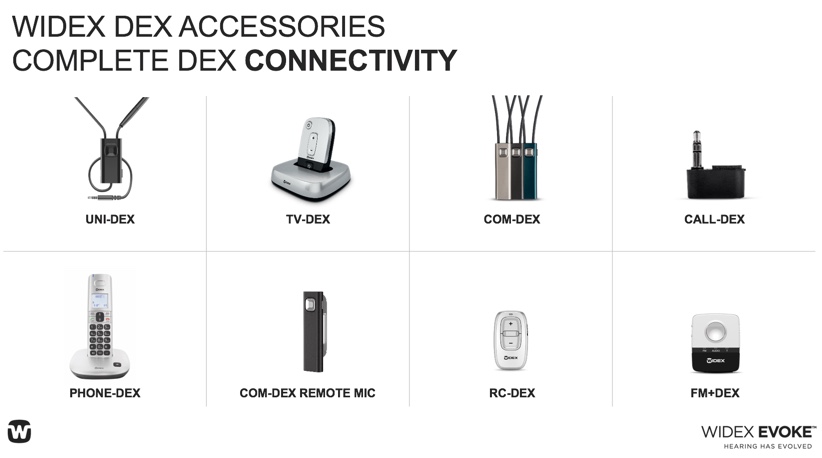
Figure 9. Widex DEX accessories.
Figure 10 shows what features are available in each level of technology (Figure 10). I'm going to highlight that we have added more processing channels to the 330, 220 and 110, so the sound quality will be more precise and you will have more fine tuning options. As stated earlier, we've also added 20% more sound classes (11, 7, 4 and 3). Additionally, we've maintained SMARTWIND noise manager.
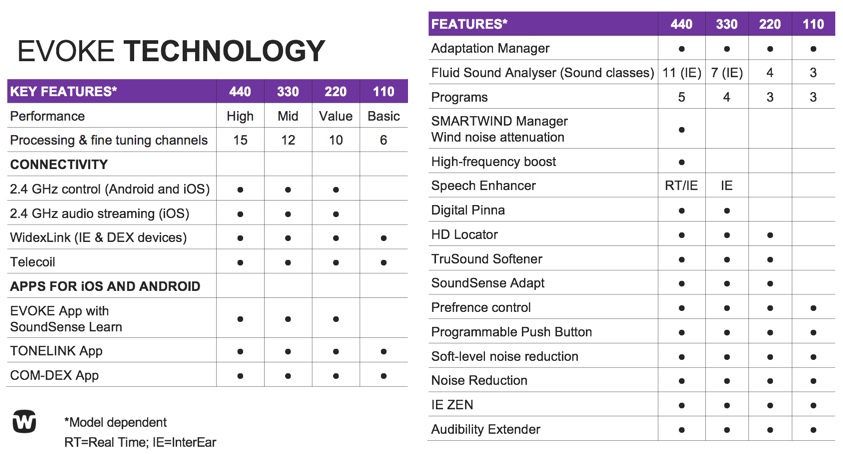
Figure 10. Features available in each level of technology.
EVOKE App Options
We have two apps that are compatible with the EVOKE hearing aids: the EVOKE app and the TONELINK app.
EVOKE App
The layout of the EVOKE App is similar to the Beyond app, but we've enhanced it (Figure 11). This is only going to be an option for the Fusion 2 model with the 2.4. It is Android and iPhone compatible.
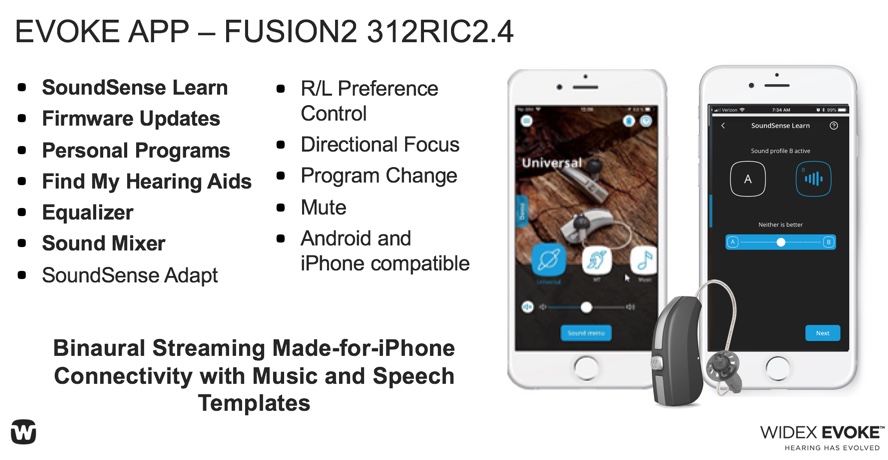
Figure 11. EVOKE App.
The features and capabilities of the EVOKE App include:
- SoundSense Learn
- Firmware Updates
- Personal Programs
- Find My Hearing Aids
- Equalizer
- Sound Mixer
- SoundSense Adapt
- R/L Preference Control
- Directional Focus
- Program Change
- Mute
- Android and iPhone compatible
Remember, your patients can get binaural streaming Made-for-iPhone connectivity, and they can listen either through the music template or the speech template, depending on which program they select when they're listening. This is our most feature-rich app and this is available with the Fusion 2 model.
TONELINK App
We are also introducing the TONELINK app (Figure 12). This app is available with all styles, except for the micro CIC. You're probably not going to want to use this app concurrently with the Fusion 2 model. With the Fusion 2 model, you're going to use the EVOKE app. With all other models, your patients can use the TONELINK app.

Figure 12. TONELINK App.
How it works: The phone emits a high frequency sound, and that high frequency sound pairs the phone to the hearing aids. Every time your patient makes an adjustment in the app, there will be a high frequency tone that the hearing aid will "hear", and then the hearing aid will make that adjustment. Whenever they press a button on the app (e.g., volume up or volume down), that high frequency tone communicates to the hearing aids to increase or decrease the volume. The patient can also change programs through the app, as well as use directional focus (front, back, left, right). The TONELINK app is Android and iPhone compatible.
The TONELINK app is beneficial for your patients who want to have smaller hearing solutions than a 312 RIC, but they also want the easy control that you get with a phone. Instead of needing a remote or having to press a button on their ear, your patients have the option to use the TONELINK app, which is more discreet than using a remote. Plus, it's easy to use.
Summary and Conclusion
In summary, EVOKE is intelligent today, providing refined, natural sound with more precision, speed and superior automation than ever before. EVOKE offers intelligent user control, focusing on comfort and listening intentions in the moment, all while providing the lowest battery consumption of any of our competitors.
Some key upgrades and features of EVOKE include:
- 30% more processing power
- 50% more sound training
- 20% more sound classes with integrated Variable Speed Compression
- 3 new specialized programs
- 4 new sound profiles
- Best natural preservation of loud and soft sounds
In addition to being intelligent today, we have the ability to become smarter tomorrow through the industry's first real-time machine learning program, SoundSense Learn. Furthermore, Widex innovations are able to keep up with our patients' dynamic lifestyles, through SoundSense Adapt, as well as through the EVOKE app and the TONELINK app. All of these things are going to give you and your patient unlimited future potential.
Thank you for joining me today to learn about this product and how it can benefit your patients. If you have any questions, feel free to reach out via email: AOInquiry@widex.com
Citation
Barnes, S. (2018, June). Hearing aid automation and user interaction: have the best of both with Widex EVOKE. AudiologyOnline, Article 23191. Retrieved from https://www.audiologyonline.com


